
Imagine waking up to the scent of fresh ocean breeze, or stepping out into a sun-drenched street alive with vibrant colors and sounds. The world is brimming with places where the pace of life slows, and every day feels like a new adventure.
In 2025, more countries than ever are rolling out the welcome mat, offering cash incentives and a fresh start for those ready to explore new horizons. This is more than a relocation; it’s an invitation to transform your life.
Ready to discover where your next chapter begins? Keep reading—your journey awaits.
1. Portugal

Portugal offers several incentives to attract new residents, particularly those willing to relocate to its interior regions. The “Emprego Interior Mais” program provides a base grant of €2,633, with an additional 20% per family member (up to €1,316), plus reimbursements of up to €878 each for moving and transportation costs. For investors, the Golden Visa program requires a minimum investment of €500,000 in areas like investment funds, job creation, scientific research, or cultural heritage preservation, granting residency rights and a pathway to citizenship after five years. Additionally, Portugal’s “Non-Habitual Resident” tax regime offers a flat 20% tax rate on Portuguese-sourced income from high-value-added activities, aiming to attract skilled professionals.The government also proposes a decade-long tax break for young adults starting their careers, offering complete income tax exemption in the first year for individuals earning up to €28,000, with tapered reductions over the subsequent ten years.
Personal moments in Portugal often feel like stepping into a dream. Picture yourself sipping a glass of vinho verde under the golden glow of a Portuguese sunset or wandering through the ancient alleyways of Porto, where time seems to slow down. Portugal’s allure is its ability to make you feel as though you’ve discovered something both old and new—where the historic streets of Lisbon meet the cutting-edge culinary scene, and where rustic charm meets contemporary chic.
Key Practical Information:
- Peak/Off-peak Seasons: Portugal’s peak season runs from June to September, bringing sunny days and packed beaches, while the off-peak months of October to May offer milder weather and fewer crowds. Best time for balance: April to June or September to October.
- Best Ways to Reach and Explore: The Lisbon Portela Airport and Porto’s Francisco Sá Carneiro Airport are the main international gateways. Once there, the best way to explore cities is by tram or metro, while rural areas shine with a scenic road trip.
- Ideal Duration of Visit: 10-14 days. A mix of city exploration and countryside retreats is ideal.
- Must-try Local Experiences: Indulge in pasteis de nata (custard tarts), witness the Fado music tradition, and visit the historic Belem Tower in Lisbon.
- Budget Considerations: Portugal remains one of the more affordable destinations in Western Europe, but Lisbon and Porto can be pricier than rural towns.
- Cultural Etiquette Tips: Respect for family values and traditions is key, and a small greeting like “Bom dia” (Good morning) can go a long way. When in rural areas, expect slower-paced, more intimate interactions.
- Photography Opportunities: Portugal offers breathtaking vistas—from the colorful cobblestone streets of Alfama to the sunset over the Douro River. Capture rolling vineyards, scenic cliffs, and vibrant azulejos (tiles).
2. Spain

Spain offers several residency options for Americans seeking a fresh start in 2025. One notable program is the Digital Nomad Visa, introduced to attract remote workers and freelancers. To qualify, applicants must demonstrate an annual income of at least €33,000 (approximately $36,500) and secure comprehensive health insurance valid in Spain. This visa allows holders to live and work in Spain while contributing to the local economy. Additionally, the region of Extremadura is offering financial incentives to encourage relocation. The regional government has allocated €2 million to attract 200 remote workers and digital nomads, providing up to €15,000 per individual to assist with relocation expenses. This initiative aims to revitalize the local economy and counteract rural depopulation.
The allure of Spain is undeniable, especially if you’re someone who seeks both rich history and the promise of endless sunshine. A typical afternoon might involve tapas at a bustling market, a stroll through the grand avenues of Madrid, or a peaceful evening at a café in Seville, where the scent of paella fills the air. In Spain, life isn’t just about work and chores; it’s about enjoying every minute and embracing the cultural vibrancy around you.
Key Practical Information:
- Peak/Off-peak Seasons: Spain’s peak season spans June to August; July and August in particular are quite hot. The shoulder seasons of April-May and September-October offer perfect weather for outdoor adventures and sightseeing.
- Best Ways to Reach and Explore: Major cities are accessible via Barcelona-El Prat Airport and Madrid-Barajas. The AVE high-speed train makes travel between cities a breeze.
- Ideal Duration of Visit: 10-14 days for a well-rounded experience, with a mix of both coastal and urban exploration.
- Must-try Local Experiences: Enjoy paella in Valencia, take a flamenco lesson in Seville, or visit La Sagrada Familia in Barcelona.
- Budget Considerations: Spain is generally affordable, but touristy cities like Barcelona and Madrid can rack up costs. Tapas can be budget-friendly if you seek out local taverns.
- Cultural Etiquette Tips: Spanish culture values social connections, so expect to engage in lively conversations. In smaller towns, siestas are taken seriously—be mindful of business hours.
- Photography Opportunities: From sunset over the Alhambra in Granada to Gaudí’s architectural wonders, Spain is a photographer’s dream. The lively flamenco dance performances offer a chance to capture the passion of Spain’s cultural heartbeat.
3. Italy

Italy’s Calabria region is actively combating depopulation by offering substantial financial incentives to attract new residents. Individuals under the age of 40 who relocate to one of nine villages with populations under 2,000 are eligible for monthly payments ranging from €800 to €1,000 over a period of two to three years. Alternatively, a lump sum is available to those starting a business that benefits the local community. Applicants must establish full-time residency within 90 days of approval and engage in activities that contribute to the region’s revitalization.
Italy’s intoxicating allure often lies in its authenticity. Whether you’re strolling through the cobbled streets of Florence or enjoying a gelato in Venice, there’s something magical about the country’s embrace of both old-world charm and contemporary energy. The Italian obsession with food means meals are never rushed—each dish is crafted with love, whether it’s a simple pasta in a quiet countryside trattoria or a Michelin-starred experience in Rome. It’s an invitation to savor the beauty of living.
Key Practical Information:
- Peak/Off-peak Seasons: Italy is crowded during the summer (June-August), but the best time to visit is the spring (April-May) and fall (September-October) for pleasant weather and fewer tourists.
- Best Ways to Reach and Explore: Major cities are served by Rome’s Fiumicino and Milan’s Malpensa airports. Trains and buses are ideal for getting around.
- Ideal Duration of Visit: 7-10 days to see the major cities, or longer if you plan to explore the countryside.
- Must-try Local Experiences: Experience wine tasting in Tuscany, dine at a trattoria in Rome, or visit Vatican City.
- Budget Considerations: Italy can be expensive, especially in cities like Venice, Rome, and Milan. However, smaller towns offer more affordable options.
- Cultural Etiquette Tips: Family and food are pillars of Italian culture, so don’t rush meals, and show respect for traditions, especially when in smaller towns.
- Photography Opportunities: The sunset over the Amalfi Coast, Piazza del Duomo in Florence, and the intricate details of St. Peter’s Basilica offer unforgettable photo opportunities.
4. Greece

Greece offers several attractive incentives for individuals seeking to relocate in 2025. The Golden Visa program allows non-EU citizens to obtain a five-year residence permit by investing a minimum of €250,000 in Greek real estate, with the option to include family members. Additionally, starting January 1, 2025, a new residence permit is available for non-EU investors who invest at least €250,000 in startups registered in Greece’s National Startup Registry, either through share capital increases or bond issuances. For retirees, Greece offers a flat tax rate of 7% on foreign pension income for fifteen years, provided certain residency criteria are met. Furthermore, the Digital Nomad Visa enables remote workers to reside in Greece while maintaining employment with foreign employers, with a minimum monthly income requirement of €3,500. These initiatives underscore Greece’s commitment to attracting international residents by offering diverse opportunities for investment, work, and retirement.
A visit to Greece feels like entering a postcard. The whitewashed buildings of the islands, the ancient temples that rise above the landscape, and the deep blue Aegean Sea create a breathtaking backdrop for everyday life. What’s memorable here isn’t just the beauty; it’s the spirit of the people, their love for family, food, and their laid-back lifestyle. Life slows down on the islands, and there’s always time to sit by the water and sip an ouzo with friends. Greece, with its mild winters and endless sunshine, is a place that will draw you in and make you feel at home.
Key Practical Information:
- Peak/Off-peak Seasons: The summer months (June-August) are busy and hot, with the best times to visit being April-May and September-October.
- Best Ways to Reach and Explore: Athens International Airport is the main entry point, with ferries connecting the islands.
- Ideal Duration of Visit: 7-10 days to explore a few islands and the mainland.
- Must-try Local Experiences: Visit the Acropolis in Athens, enjoy Greek mezze with local wine, and relax on the stunning beaches of Crete.
- Budget Considerations: While Greece is reasonably priced, island life can be expensive during peak season. Explore local tavernas for affordable meals.
- Cultural Etiquette Tips: Respect for history and religion is crucial. Family and hospitality are highly valued, so expect to be warmly welcomed into local homes.
- Photography Opportunities: From the sunset in Santorini to the temples of Delphi, Greece is a photographer’s dream, full of ancient wonders and natural beauty.
5. Costa Rica
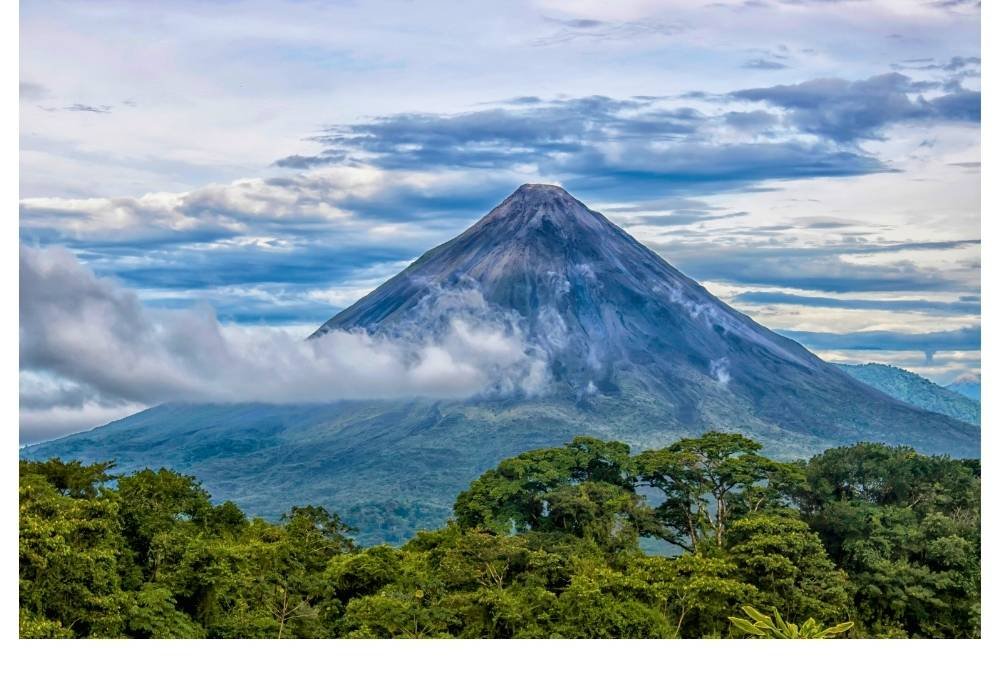
Costa Rica actively encourages expatriates, particularly retirees, to relocate by offering attractive incentives. The Pensionado Program, designed for retirees, requires proof of a minimum monthly income of $1,000 from a pension or retirement fund. Applicants must provide necessary documentation, including birth certificates and passports. This program offers various discounts on health care, entertainment, and public services, enhancing the appeal for retirees seeking a comfortable lifestyle abroad.
Living in Costa Rica means being surrounded by nature, where the days are punctuated by breathtaking sunrises over the Pacific and evenings filled with the sounds of nature. Whether you’re hiking through the cloud forests, spotting wildlife in the rainforests, or surfing in Tamarindo, Costa Rica’s rich biodiversity is unmatched. It’s a country where your connection to the natural world is ever-present, and a deep sense of peace permeates everyday life. The warmth of the people and the focus on family make it easy to feel at home.
Key Practical Information:
- Peak/Off-peak Seasons: The dry season (December-April) is the most popular time to visit, while the rainy season (May-November) offers lush greenery and fewer crowds.
- Best Ways to Reach and Explore: Major cities like San José and Liberia have airports with direct flights. Public buses are common for travel, though a rental car is ideal for exploring the countryside.
- Ideal Duration of Visit: 7-10 days for a mix of beach and jungle adventures.
- Must-try Local Experiences: Take a zipline tour through the rainforest, hike Arenal Volcano, or relax on the beaches of Manuel Antonio.
- Budget Considerations: Costa Rica can be affordable, but tourist areas near the beach can be expensive. Opting for local eateries is a budget-friendly choice.
- Cultural Etiquette Tips: Costa Ricans value hospitality, and it’s important to greet people with a warm handshake. Be mindful of local customs and always show respect for nature.
- Photography Opportunities: From the dense jungles of Monteverde to the surfing beaches of the Pacific, Costa Rica is a photographer’s paradise with abundant wildlife and stunning landscapes.
6. Mexico
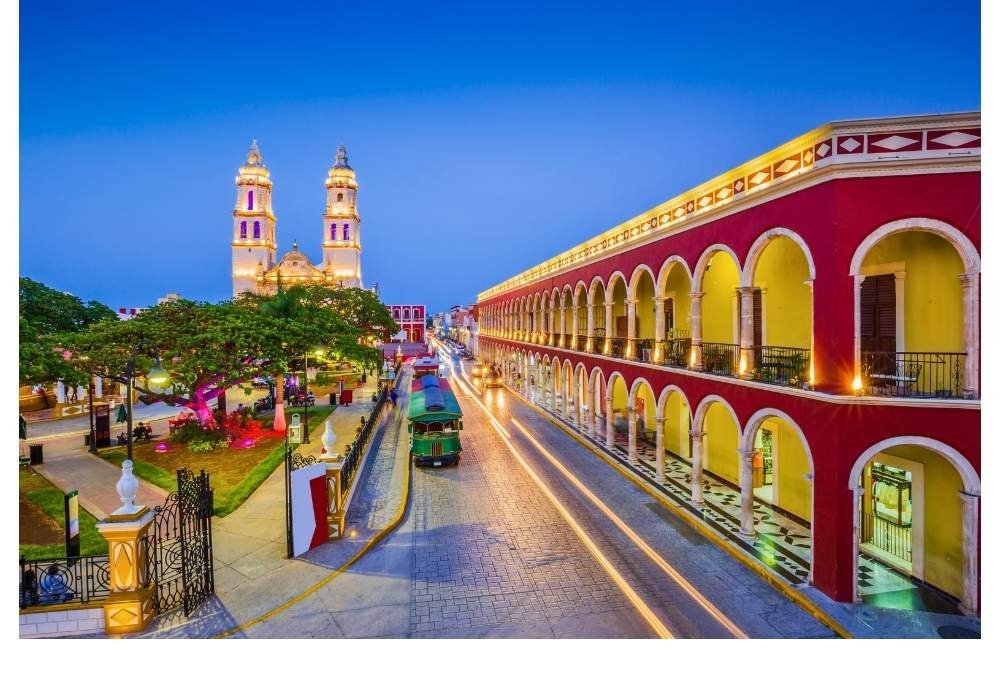
Mexico offers a variety of incentives to attract Americans seeking a fresh start in 2025. For retirees, the cost of living is notably lower compared to the U.S., with affordable real estate options—homes in cities like Guanajuato can be priced under $150,000, and rentals range from $600 to $1,400. Additionally, Mexico provides tax advantages for U.S. retirees, including exemptions on U.S.-sourced retirement income and discounts on property taxes and services. Popular retirement destinations include Playa del Carmen, Mazatlán, Lake Chapala, San Miguel de Allende, and Mérida.
Living in Mexico provides a unique opportunity to experience multi-layered living, where old traditions coexist with a modern outlook. A morning walk through the historic center of Mérida may lead you to a quiet park, where locals greet each other with a genuine smile, or a visit to the Guanajuato region might introduce you to the hidden charm of underground tunnels and cobblestone streets filled with murals and art galleries. Mexico invites you to discover its stories beyond the postcards, showing you its quieter moments and unspoken beauty.
Quick Tips for Practical Living:
- Weather Considerations: Mexico’s weather varies greatly depending on region; coastal areas are warm year-round, while central Mexico has milder temperatures. November to April offers the best weather for travel, particularly in Mexico City.
- Travel Insights: Fly into Mexico City or Cancún, then take local buses or flights to smaller destinations. Renting a car is ideal for exploring coastal or mountainous regions.
- Duration: You can live comfortably in Mexico for an extended stay. If you’re planning to explore the towns, 3-4 weeks will give you a well-rounded experience.
- Don’t Miss: Traditional Mexican cuisine like mole in Oaxaca or street tacos from Tijuana, the beaches of Zihuatanejo, or a visit to the Pueblos Magicos for an authentic escape.
- Cost Considerations: Mexico is generally affordable with plenty of affordable street food and charming, budget-friendly accommodations in small towns.
7. Australia
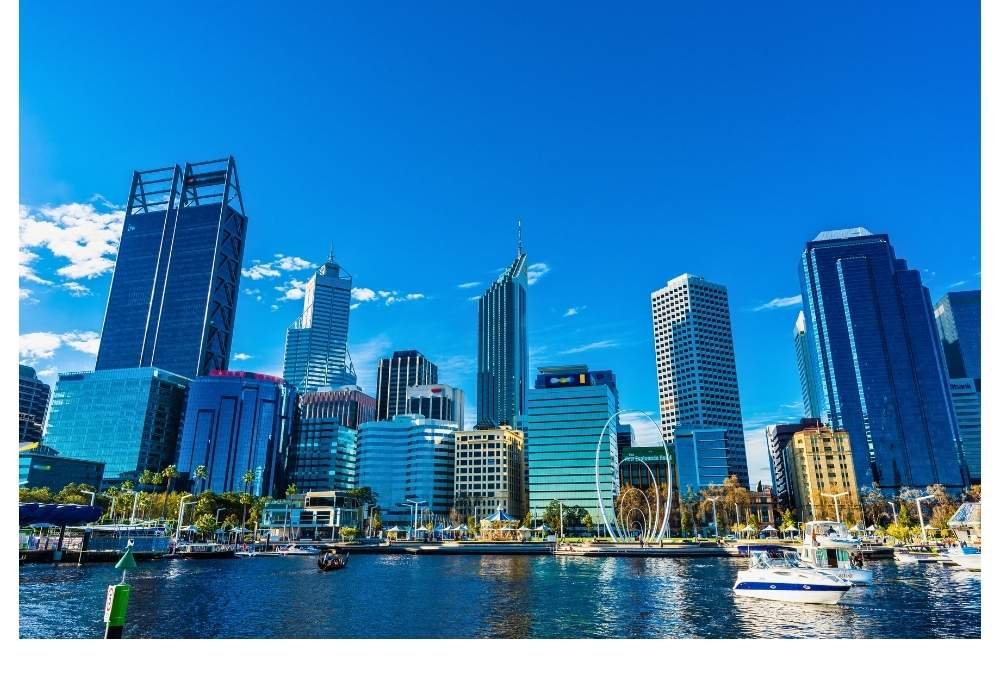
Australia’s 2024-2025 Permanent Migration Program allocates 185,000 places for new migrants, emphasizing the attraction of skilled professionals to address labor shortages in sectors like healthcare, technology, and finance. The program includes Employer-Sponsored Visas, Skilled Independent Visas, State/Territory Nominated Visas, and Regional Visas, each designed to meet specific regional and sectoral needs. Additionally, South Australia is considering a “Stay in SA” bonus to retain young Adelaideans and international graduates, offering financial incentives for those who complete qualifications and secure full-time employment in the region for a set period.
What makes Australia stand out, though, is its deeply connected culture with the land and the people who inhabit it. The lifestyle is built around appreciating natural beauty and sharing moments with friends, whether that means having a BBQ on the beach or a day out at one of the country’s many farmers’ markets. It’s this genuine connection to both community and nature that provides a fulfilling and welcoming environment for those looking to build a new life.
Important Things to Know:
- Seasons & Weather: Australia’s southern hemisphere means that summer is December to February, while winter is June to August. The best time to visit is during the shoulder seasons (March-May, September-November).
- How to Get Around: Domestic flights and road trips are the best ways to explore Australia. Renting a car or camper van gives the flexibility to explore regions like Tasmania or the Gold Coast.
- Recommended Visit Duration: A 2-week visit is perfect for exploring key regions. If you’re looking to move, longer stays are ideal to experience the varied lifestyles in different cities and rural areas.
- Don’t Miss: Great Barrier Reef diving, wildlife safaris in the Outback, and a wine tour in the Yarra Valley.
- Cost Insights: Australia can be expensive in major cities. However, smaller towns offer lower living costs, and dining out at local pubs or markets is more affordable.
8. New Zealand
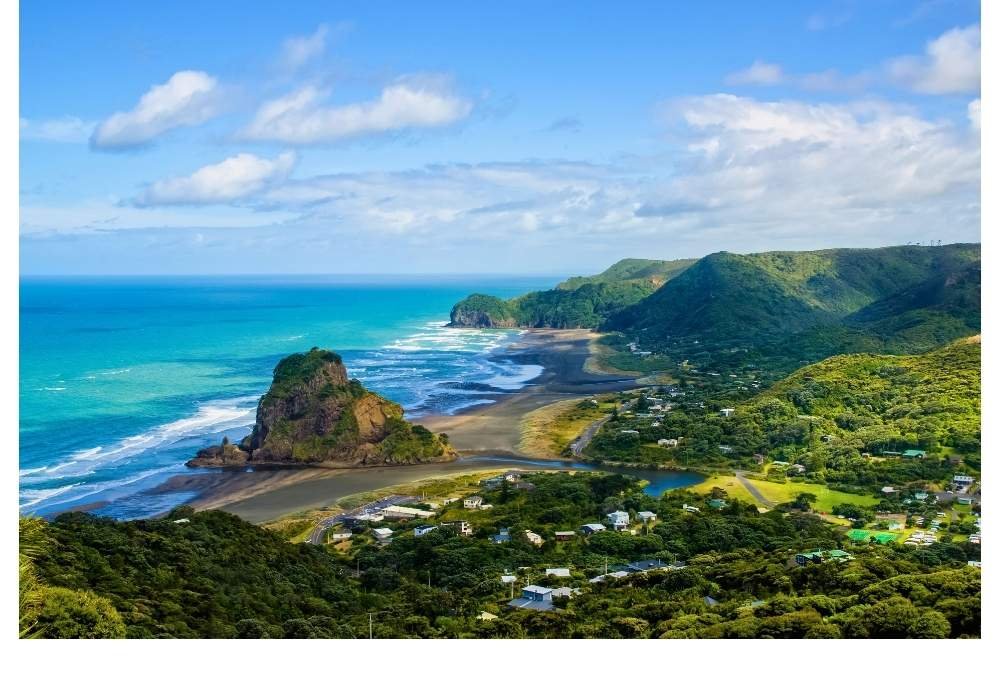
New Zealand’s Active Investor Plus Visa program, launching in April 2025, offers a pathway to permanent residency for wealthy individuals. There are two investment options: the Growth Category requires NZ$5 million (US$2.8 million) in high-risk assets for three years, with only 21 days of physical presence. The Balanced Category requires NZ$10 million (US$5.7 million) in low-risk assets over five years, with 105 days of physical presence. The program removes previous requirements, like English proficiency, making it more accessible. Since the changes were announced, interest has surged, especially from U.S. citizens, with a 400% increase in visa page visits. This program provides a unique opportunity for those seeking a new life abroad.
New Zealanders are known for their deep respect for the land, and their commitment to sustainability and environmental preservation is admirable. Whether you’re exploring Aoraki/Mount Cook National Park, enjoying a quiet afternoon in the Waiheke Islands, or attending a local Māori performance, New Zealand offers a genuine connection to its people and landscapes. Its diverse culture, natural wonders, and commitment to peace create an environment where newcomers quickly feel like family.
Living Essentials for New Zealanders:
- Best Time to Visit: Summer months (December-February) are ideal for outdoor adventures, though spring and autumn are less crowded with mild temperatures.
- Navigating the Country: Driving is the best way to explore. Public transport in cities like Wellington and Auckland is decent, but for countryside explorations, renting a car or taking a self-guided tour works best.
- How Long Should You Stay? If you’re planning a move, a few months should give you ample time to explore and settle. A typical weeklong trip covers the highlights like Rotorua’s geothermal areas and Queenstown’s adventure sports.
- Don’t Miss: Try the local Māori food experiences, hike the Tongariro Alpine Crossing, and take a boat tour around Milford Sound.
- Cost Tips: While New Zealand offers a high quality of life, it can be expensive in the big cities. Rural areas are affordable, and farm-to-table dining is a highlight for budget-conscious foodies.
9. Canada
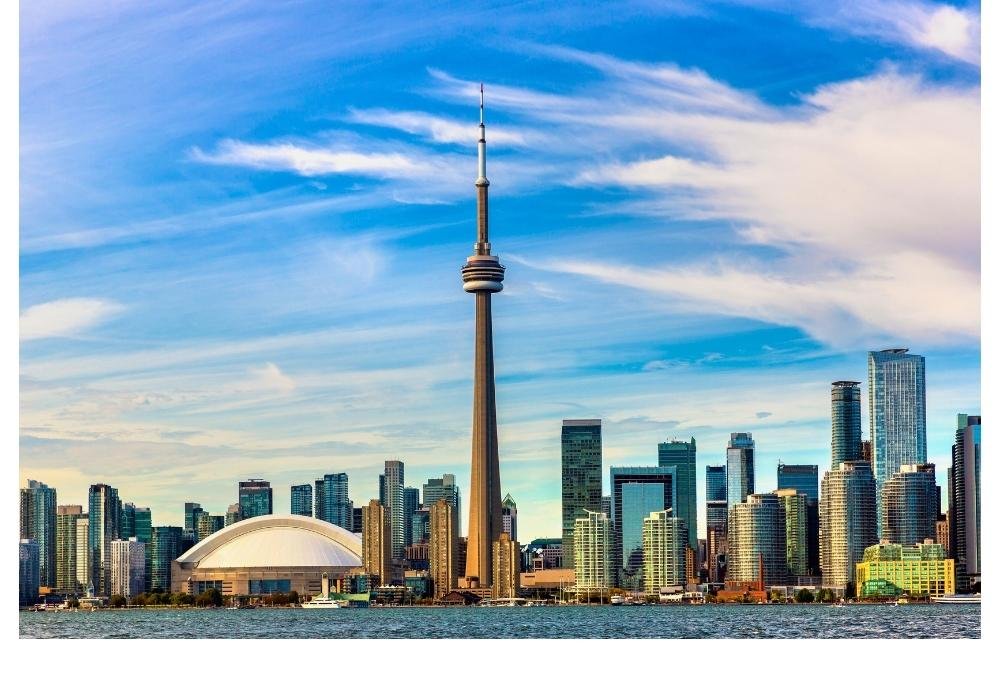
Canada offers several immigration programs to attract skilled workers, entrepreneurs, and their families. One notable initiative is the Graduate Retention Program in Saskatchewan, which provides financial incentives to recent graduates who choose to live and work in the province. Under this program, eligible graduates can receive up to CAD 20,000 in tax credits over a period of seven years. To qualify, applicants must have graduated from a post-secondary institution in Saskatchewan, maintain residency in the province, and file taxes locally.
What makes Canada truly exceptional is the depth of its natural environment. Imagine waking up to the sound of loons calling over a northern lake, or taking a quiet walk through a forest trail in British Columbia, followed by a cozy night in front of a fireplace. The community-oriented lifestyle here is welcoming, and Canadians are known for their kindness, making it easy for newcomers to feel at home. In Quebec, you can immerse yourself in French culture, while in Montreal, you can enjoy world-class festivals and art.
Practical Considerations for Newcomers:
- Best Times to Visit: Summer offers mild weather, perfect for outdoor activities, while winter offers skiing, especially in British Columbia and the Rocky Mountains.
- Traveling Around Canada: Domestic flights are common, but road trips are popular due to the vast distances. Public transport in urban areas is accessible, but a car rental is ideal for exploring more remote areas.
- Ideal Stay Duration: A long-term stay (3-6 months) will give you a taste of both urban and rural life. If visiting, spend at least 2 weeks to explore a major city and a nearby natural wonder.
- Don’t Miss: Experience Niagara Falls, the CN Tower in Toronto, and hike through the Canadian Rockies.
- Cost Considerations: Canada’s cost of living can vary greatly, but affordable areas exist in the prairies and small towns.
10. Thailand
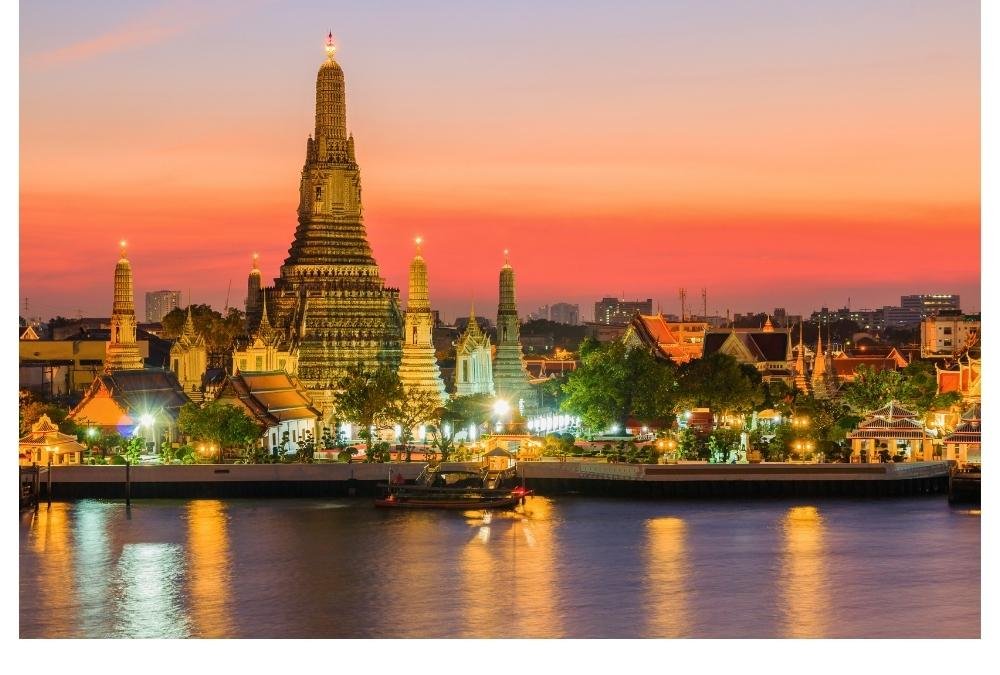
Thailand is actively encouraging foreign professionals, retirees, and investors to relocate by offering a comprehensive package of incentives. Qualified individuals can obtain a 10-year long-term resident visa, which extends to spouses and children, and includes an automatic work permit. Financially, these residents benefit from income tax rates equivalent to those of Thai citizens, with a flat 17% rate for degree holders, and tax exemptions on income earned abroad. Additionally, relaxed restrictions on foreign ownership and rental of land and property are provided. To be eligible, applicants must meet specific criteria, such as a minimum annual income of $80,000 over the past two years and at least $1 million in assets for investors, or a stable annual pension of $40,000 for retirees aged 50 or older.
What makes Thailand especially magical is how the country mixes the ancient with the modern. You can spend the morning exploring the temples of Ayutthaya, followed by an afternoon of exploring the night markets of Chiang Rai, or perhaps indulge in some of the world’s best street food in Bangkok. Thailand offers a diverse array of experiences, from adrenaline-pumping adventures like ziplining in Chiang Mai to spiritual retreats with meditation workshops. It’s a place where you can truly live life at your own pace.
Practical Aspects of Moving to Thailand:
- Best Time to Visit: November to February is ideal for cooler weather and clear skies. April-May can be hot, but is also the time for the Songkran Festival (Thai New Year).
- Travel Tips: Public transport in cities like Bangkok is easy to navigate, but for exploring rural areas, rent a scooter or private transport.
- Ideal Duration of Visit: A 1-month trip is ideal for first-timers, but longer stays allow for immersion in the culture.
- Don’t Miss: A trip to the floating markets, Elephant Nature Park, and Khao Sok National Park.
- Cost Tips: Thailand is very budget-friendly, especially for accommodation and food. Street food is affordable, and you’ll find many local markets with low-cost goods.
11. Japan

Japan’s Regional Revitalization Program offers financial incentives to individuals willing to relocate to rural areas facing population decline. Participants can receive grants up to ¥4,800,000 (approximately $31,725) to support their move and settlement. Additionally, the program provides a monthly stipend of ¥85,000 (about $560) for up to three years to assist with living expenses. These incentives aim to rejuvenate local communities by attracting new residents and counteracting demographic challenges.
Japan isn’t just about the journey; it’s about immersing yourself in a world where every moment feels both exciting and meaningful. Whether you’re savoring fresh sushi in Tsukiji Market or admiring cherry blossoms in full bloom, Japan invites you to experience life at a different pace. This is your chance to step into a world where innovation meets tranquility, and your future is filled with adventure.
Creative Practical Info:
- Best Times to Visit: Spring (March-May) for cherry blossoms, and fall (October-November) for colorful foliage, are ideal seasons to experience Japan at its finest.
- Getting Around: Japan’s rail system is world-renowned for efficiency—be sure to get a Japan Rail Pass for discounted travel. In the cities, subways are the fastest and most efficient mode of transport.
- Must-Do Experiences: Visit the ancient Kinkaku-ji (Golden Pavilion) in Kyoto, explore the vibrant streets of Shibuya, or take part in a traditional tea ceremony.
- Cultural Etiquette: Japanese culture values politeness and respect, so always bow slightly when greeting and remove shoes before entering homes.
- Ideal Duration: 10-14 days to immerse yourself in both the city and countryside.
12. Ecuador

Ecuador offers several attractive incentives for expatriates considering relocation. The Jubilado (Pensioner) Visa requires proof of a monthly income of at least three times the minimum wage, which in 2024 is $460, totaling a minimum of $1,380 per month. This visa is initially valid for two years and can be renewed or converted into permanent residency thereafter. The cost of living in Ecuador is notably low; a couple can live comfortably on an annual budget of under $23,000, covering expenses such as rent, utilities, healthcare, and groceries.
Ecuador isn’t just a destination—it’s a place to connect with nature, culture, and a new sense of purpose. Whether you’re hiking in the Cotopaxi National Park, exploring the stunning Galápagos Islands, or sipping coffee in the highlands, Ecuador offers a lifestyle that celebrates simplicity and connection to the world around you. This is your chance to live in a place where adventure and serenity exist side by side, and every day is a chance for discovery.
Creative Practical Info:
- Best Time to Visit: Ecuador enjoys a year-round spring-like climate. However, the best months for exploring the highlands are June to September, while the coast is perfect year-round.
- Getting Around: Ecuador is known for its local buses that connect even the most remote areas, but renting a car is ideal for exploring the countryside at your own pace.
- Must-Do Experiences: Visit the Galápagos Islands for an unforgettable wildlife encounter, explore the colonial streets of Quito, or hike through the Amazon rainforest.
- Cost of Living: Ecuador is incredibly affordable, with low-cost healthcare and housing options in cities like Cuenca.
- Cultural Etiquette: Warmth and hospitality define Ecuadorian culture. It’s customary to greet people with a friendly hug or kiss on the cheek.
13. Colombia

Colombia has introduced initiatives to attract individuals seeking a fresh start. The government offers access to business loans for returnees aiming to start businesses, facilitating economic reintegration. Additionally, the cost of living in Colombia is significantly lower than in the United States, with estimates suggesting it’s about 60% less expensive. This affordability, combined with a growing economy and stable government, makes Colombia an appealing destination for those considering relocation.
In Manizales, you’ll discover the coffee heartland in full swing, where local farmers share stories of how they tend to the world’s most famous coffee beans. Salento, a sleepy mountain town, offers vibrant markets and majestic landscapes, perfect for those who appreciate the slow, tactile pleasures of life. Colombia’s small towns may not make many travel lists, but they are where you can feel the country’s soul—where warmth and resilience define its people and where hidden treasures like horseback riding through cloud forests and coffee-tasting tours abound.
Practical Information with a Twist:
- Best Time to Visit: Colombia enjoys a year-round tropical climate, but consider visiting between December and March, when rainfall is lower and weather is warm.
- Best Transportation: Get off the beaten path by exploring by bus or jeep, especially if you’re venturing into coffee farms or the Andes.
- The Hidden Gem: Head to Minca near Santa Marta—this small mountain town is not yet overrun by tourists, but offers trails, waterfalls, and a rich blend of nature and culture.
- Nightlife: Don’t miss Medellín’s nightlife, particularly Comuna 13 where local hip-hop culture meets the vibrant community atmosphere.
- Cultural Insight: Colombia’s art and music scene, from Cumbia rhythms to Vallenato music, will immerse you in a joyful, dance-filled culture that never feels quite like anywhere else in Latin America.
14. Panama

Panama offers an attractive incentive program for retirees through its Pensionado Visa, which requires applicants to demonstrate a lifetime income of at least $1,000 per month for individuals or $1,250 for couples. Once approved, retirees benefit from a range of discounts, including 25% off airfare, 20% off restaurant bills, 50% off movie tickets, 10% off hospital services, and 15% off utilities like electricity and phone services. With its affordable cost of living—where essentials like rent, utilities, and groceries are significantly cheaper than in North America or Europe—Panama has become an appealing destination for those looking for a more affordable lifestyle. Moreover, the country’s stable political environment, favorable tax laws, and investor-friendly policies make it even more attractive for expatriates seeking a fresh start abroad.
For those who appreciate both history and nature, Panama offers the Barro Colorado Island, a natural reserve in the Panama Canal, where you can explore biodiversity hotspots alongside indigenous history. There’s something magical about a place that feels as rich in history as it is in nature—a unique blend that’s rarely found elsewhere.
Creative Travel Info:
- Best Seasons to Visit: Dry season (December to April) is the best time to explore Panama, especially the beaches and highlands. The rainy season offers lush beauty, but you may be caught in afternoon showers.
- Travel Tips: Panama is great for road-trippers—rent a 4×4 for easy access to the Boquete Highlands and remote beach areas like Playa Venao.
- Must-Do Activity: Spend a day on a catamaran tour to Isla Coiba, a UNESCO World Heritage site known for its untouched wildlife and underwater treasures.
- Nature Lovers’ Haven: Explore the Darien Gap, one of the last untouched rainforests in the world, for a true adventure into the wild.
- Thematic Connection: Panama’s magic lies in crossroads of civilization—a bridge between the Americas, offering an intriguing mix of old-world charm and vibrant modern life.
15. Croatia

Croatia is offering several incentives to attract immigrants. Returnees can live temporarily for two years without meeting financial or health insurance requirements. After three years, they can apply for permanent residence and enjoy a five-year income tax exemption. The EU Blue Card program has been improved, with a four-year validity and eligibility for workers without formal qualifications. The Digital Nomad Visa stay duration has been extended to 18 months for remote workers. Work permits are now valid for up to three years, and seasonal workers can stay for nine months. Croatia aims to make immigration easier and more attractive. These measures emphasize financial benefits and streamlined relocation. The country is positioning itself as a welcoming destination for global talent.
Croatia’s charm doesn’t end with its natural beauty. In Zadar, the ancient ruins collide with the contemporary in the form of the Sea Organ—a whimsical, sound-producing installation that plays music with the waves of the Adriatic. Croatia is a country that seamlessly blends its rich history with modernity and offers an array of unexpected experiences—whether it’s kayaking in the Paklenica National Park or sipping wine in Hvar’s hidden vineyards.
Whimsical Practical Tips:
- When to Go: Late spring and early fall offer the best weather, with fewer tourists crowding the coastal towns.
- Travel Tip: Rent a small boat to explore the islands and hidden beaches off the coast of Vis or Mljet for secluded views.
- Cultural Must-Dos: Visit the Roman ruins in Pula or take a food tour through Zagreb’s historic markets.
- Local Festivals: Experience Dubrovnik’s Summer Festival for local music, theatre, and performances in one of Europe’s most beautiful settings.
- Travel Theme: Croatia embodies the hidden gem theme, offering a blend of history, nature, and vibrant local life, perfect for travelers seeking both peace and adventure.






